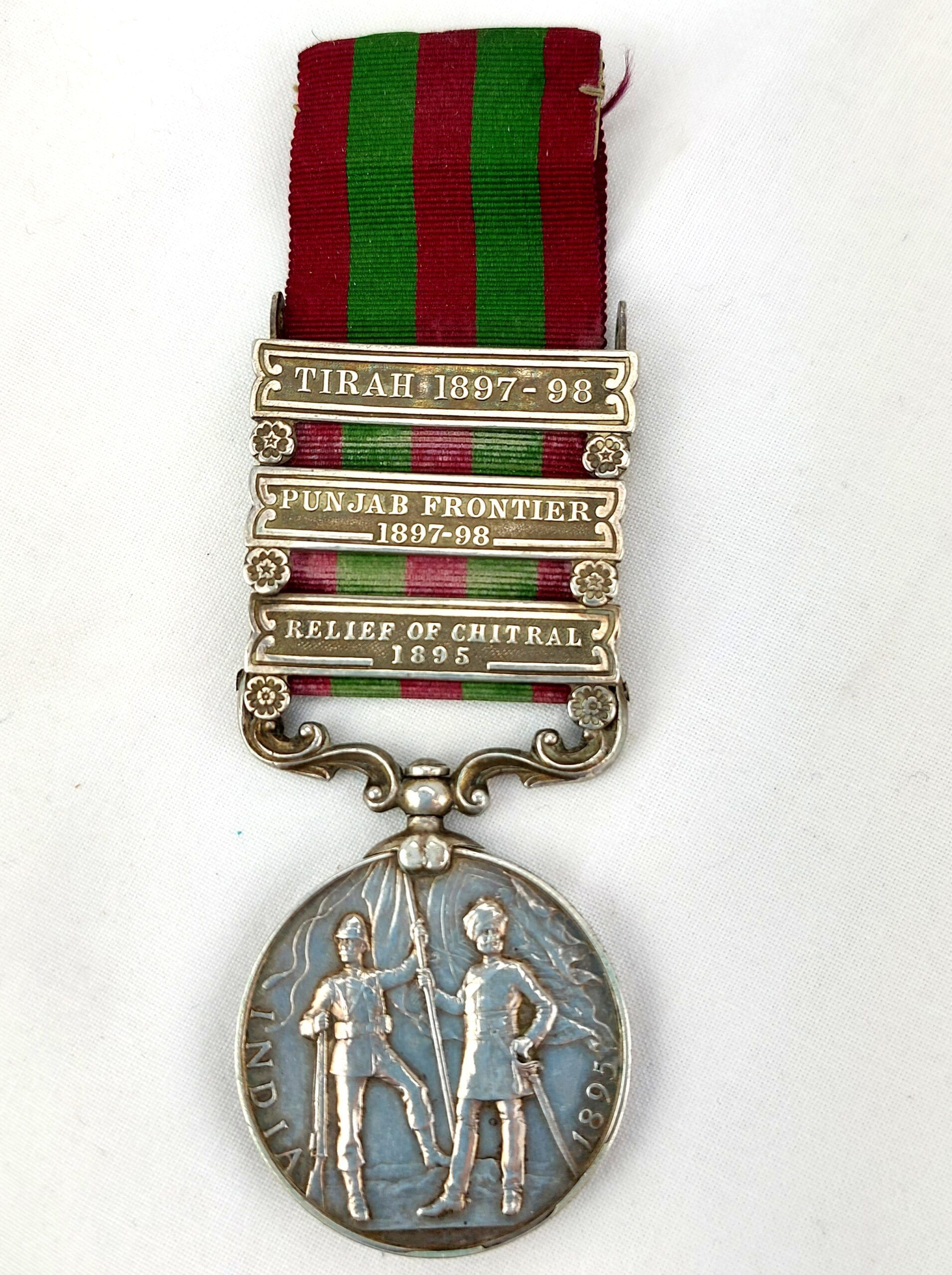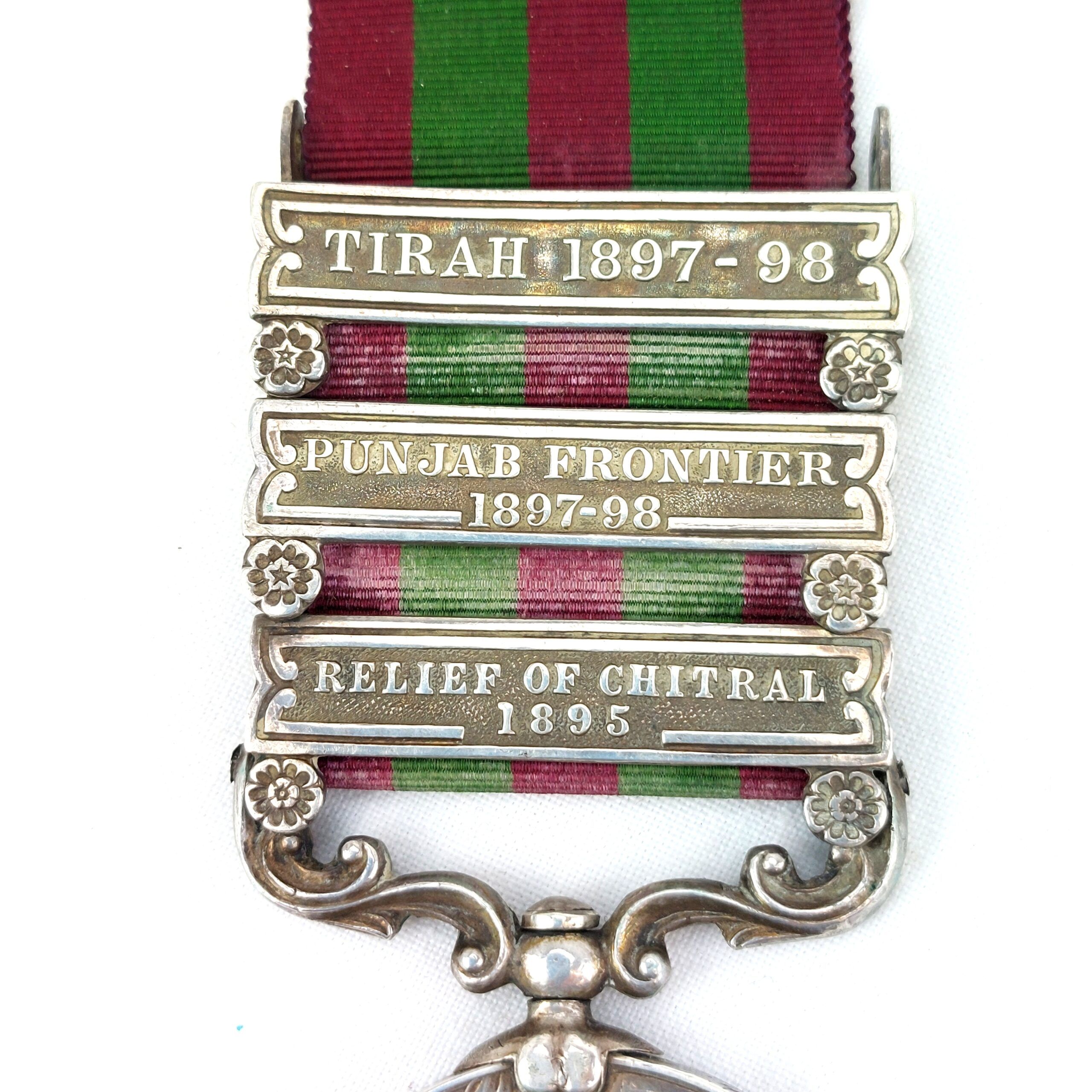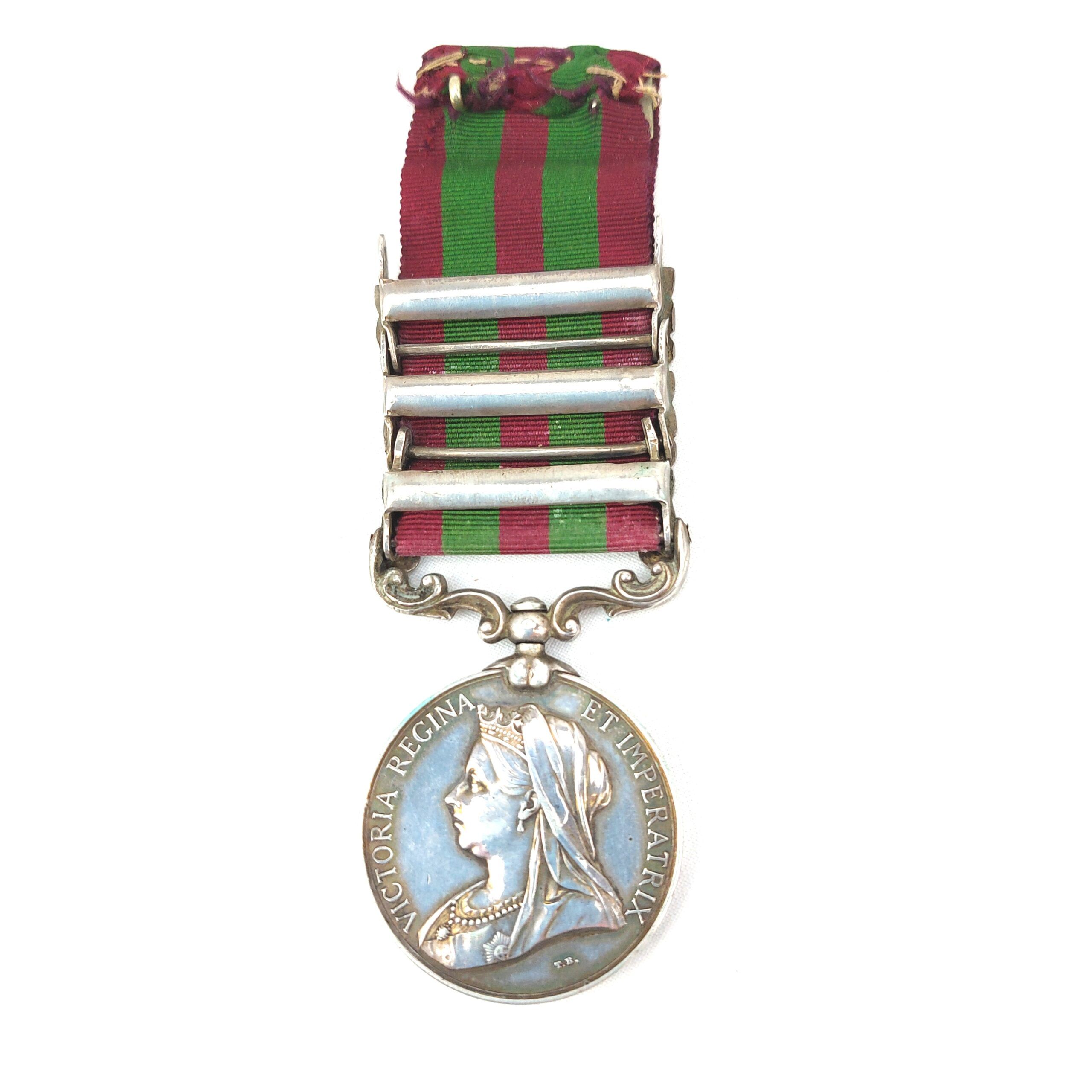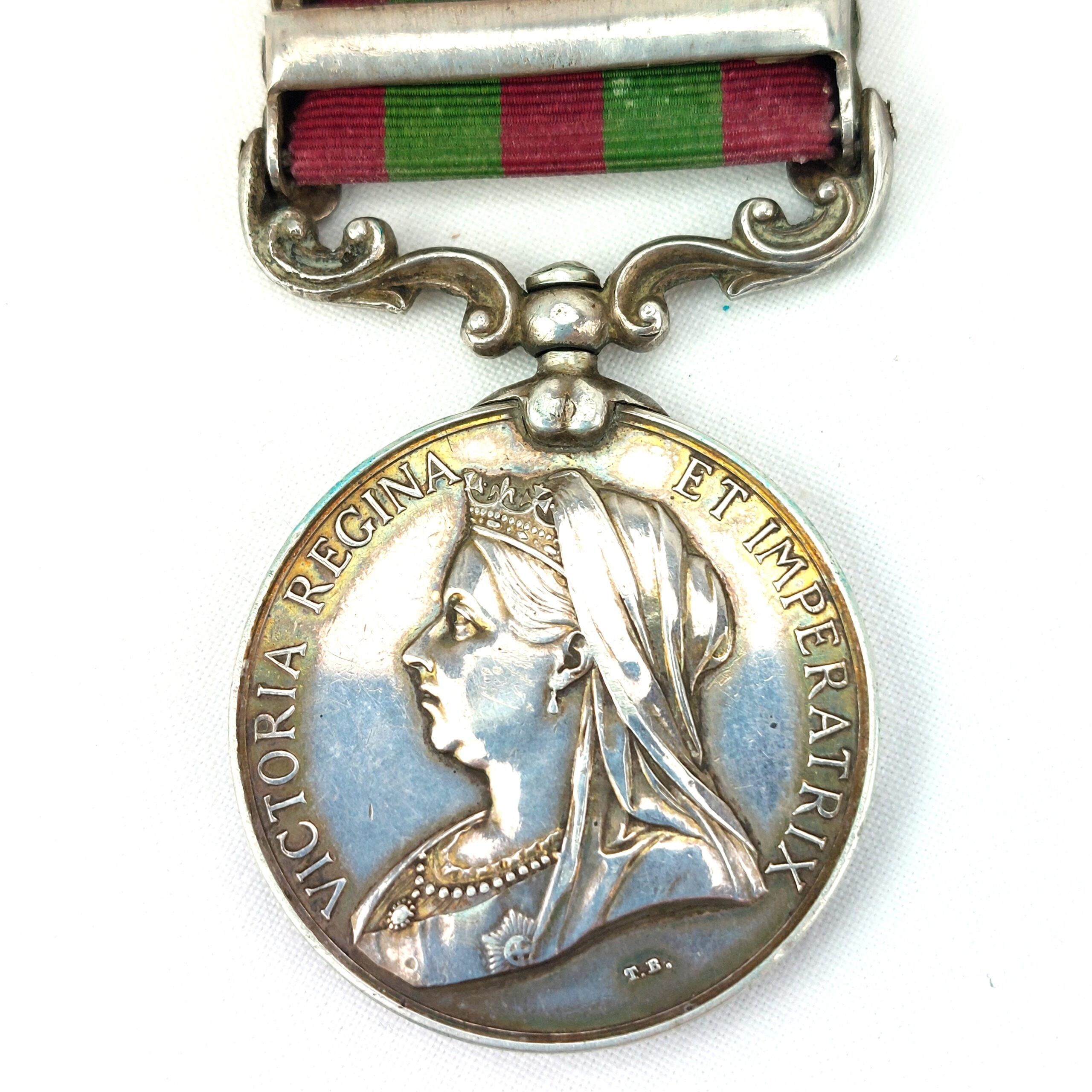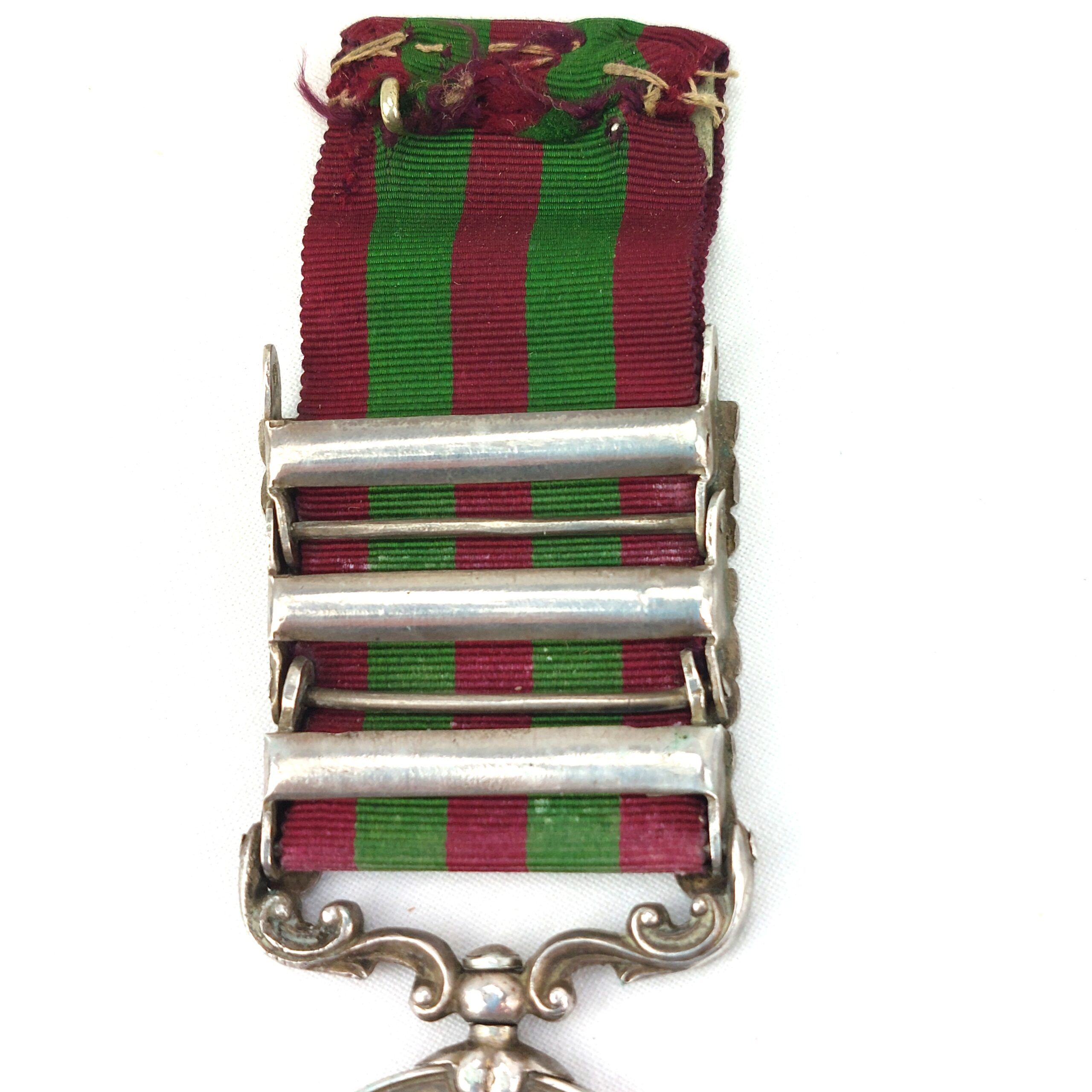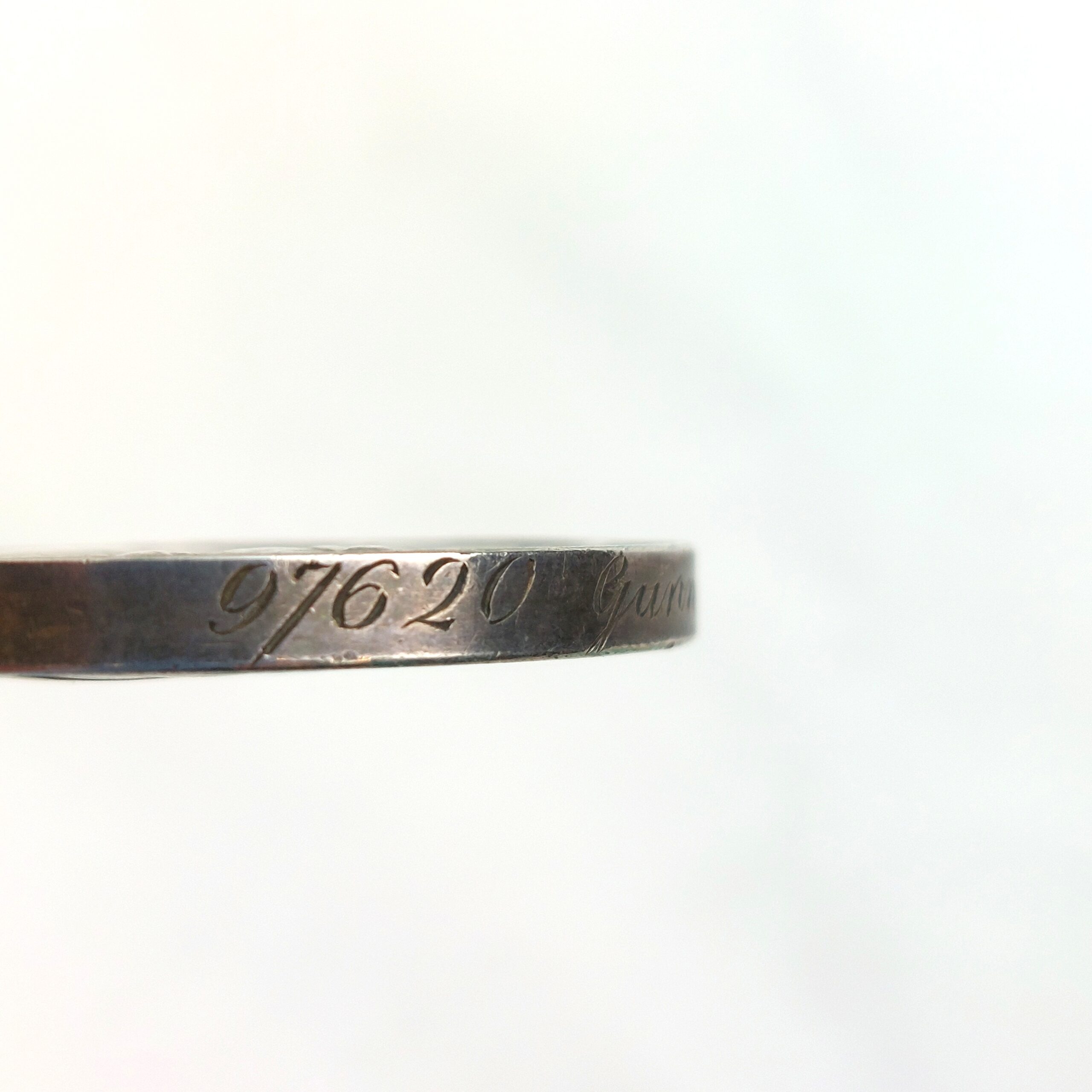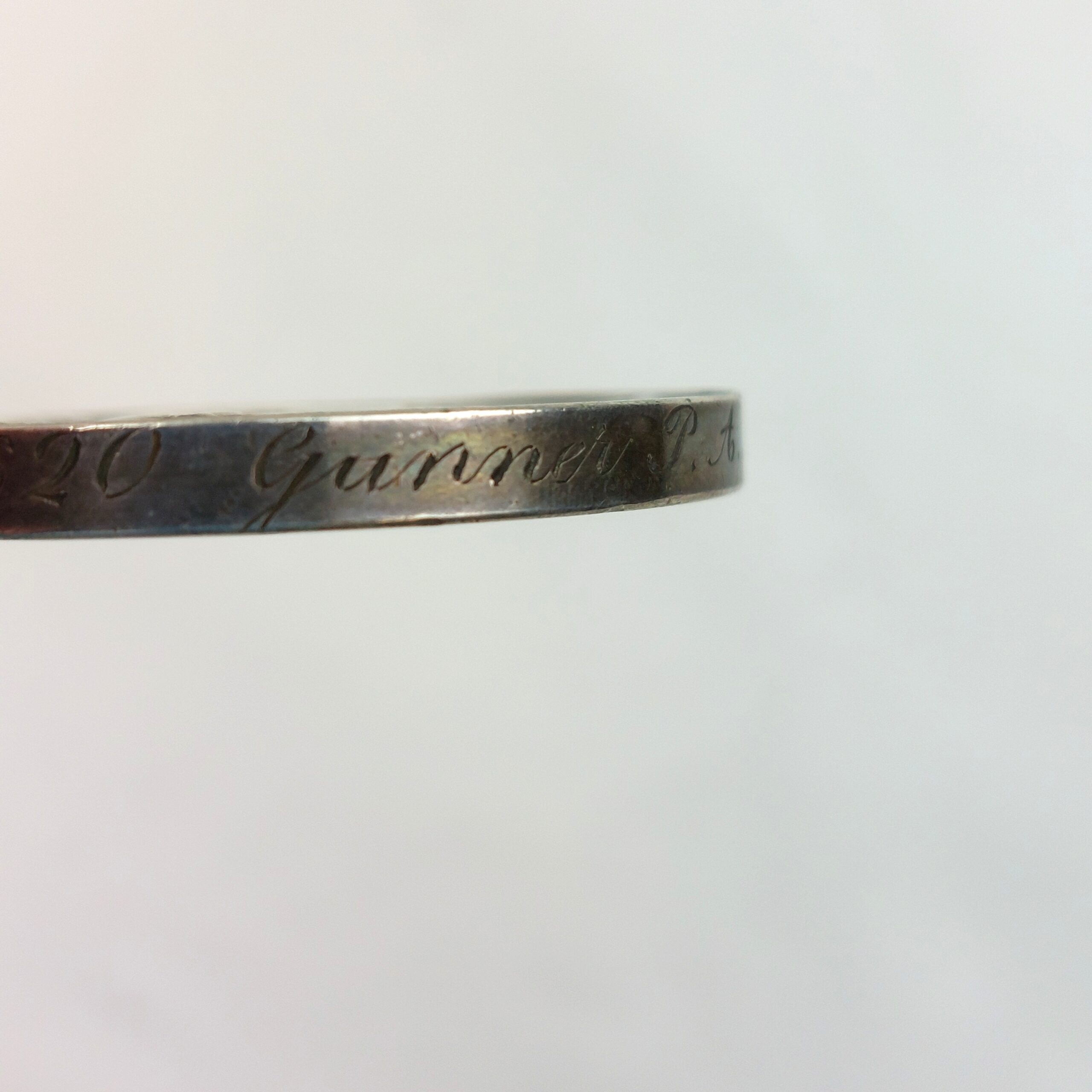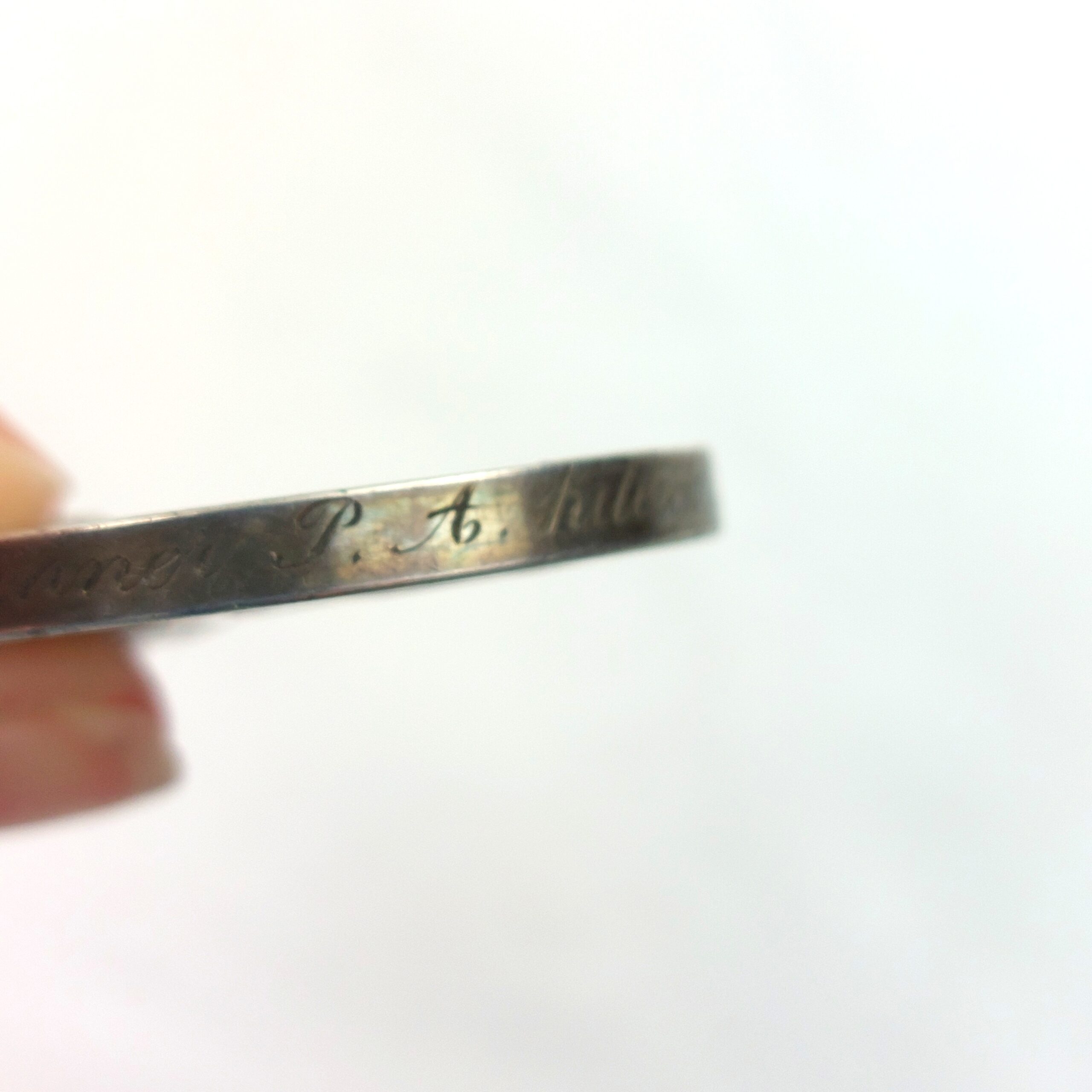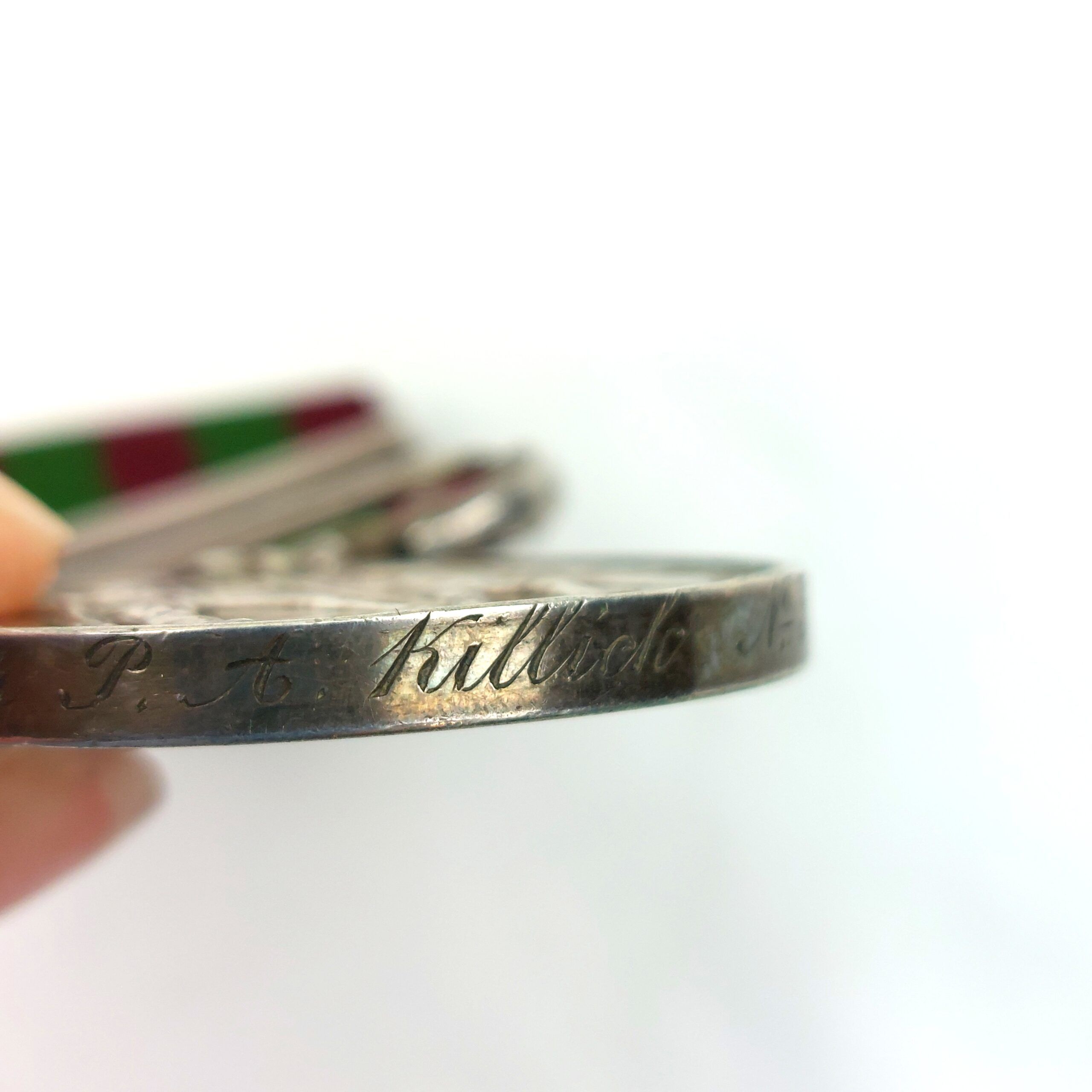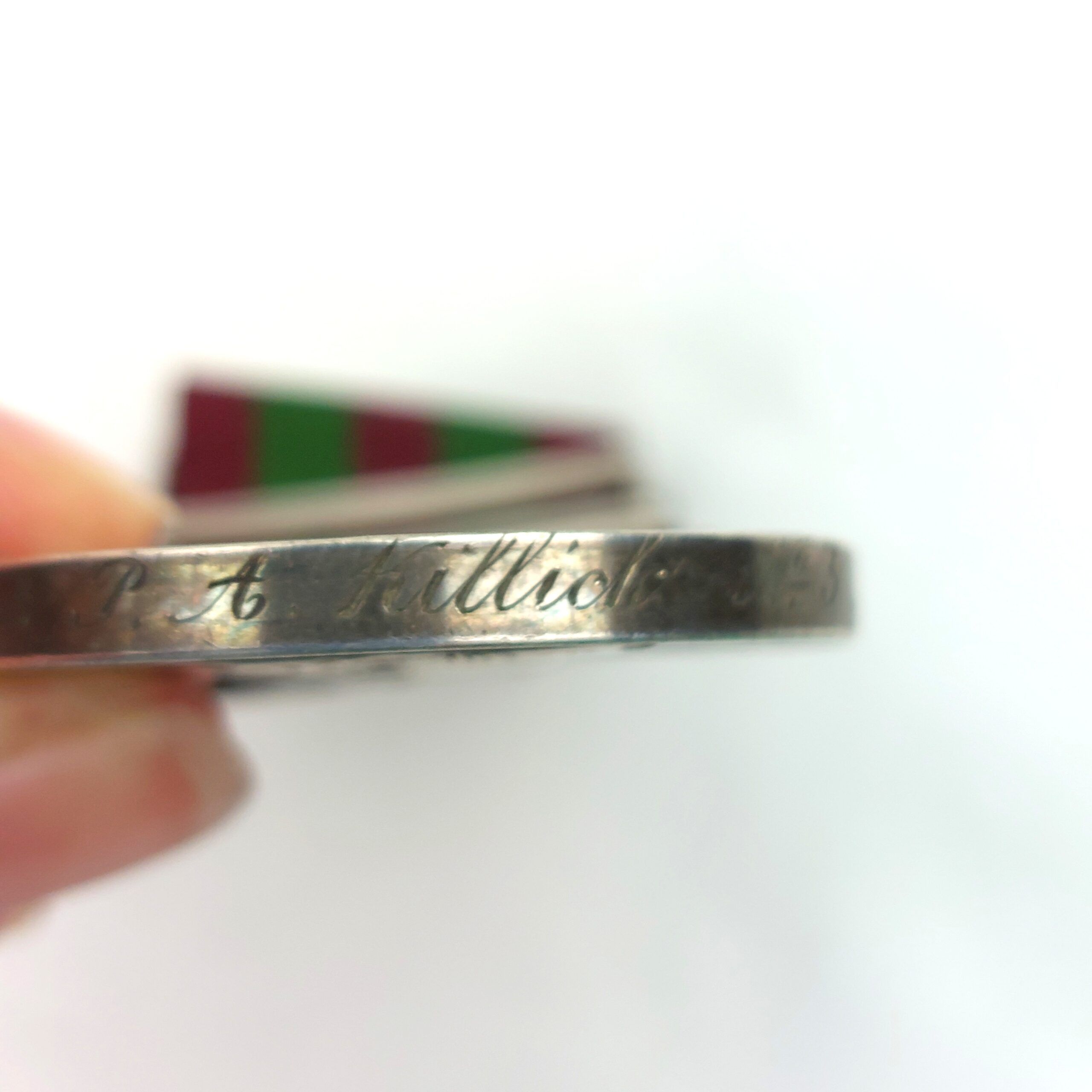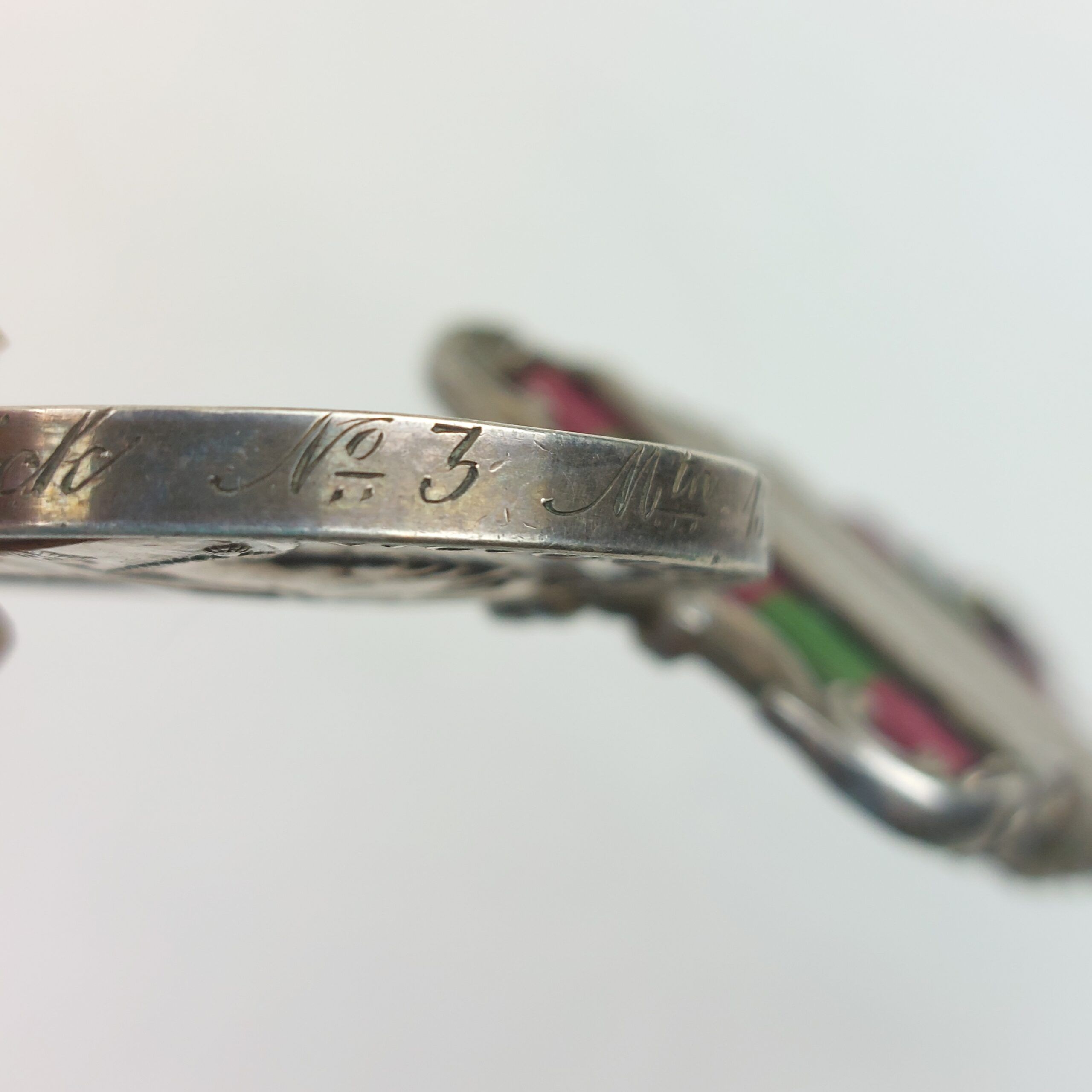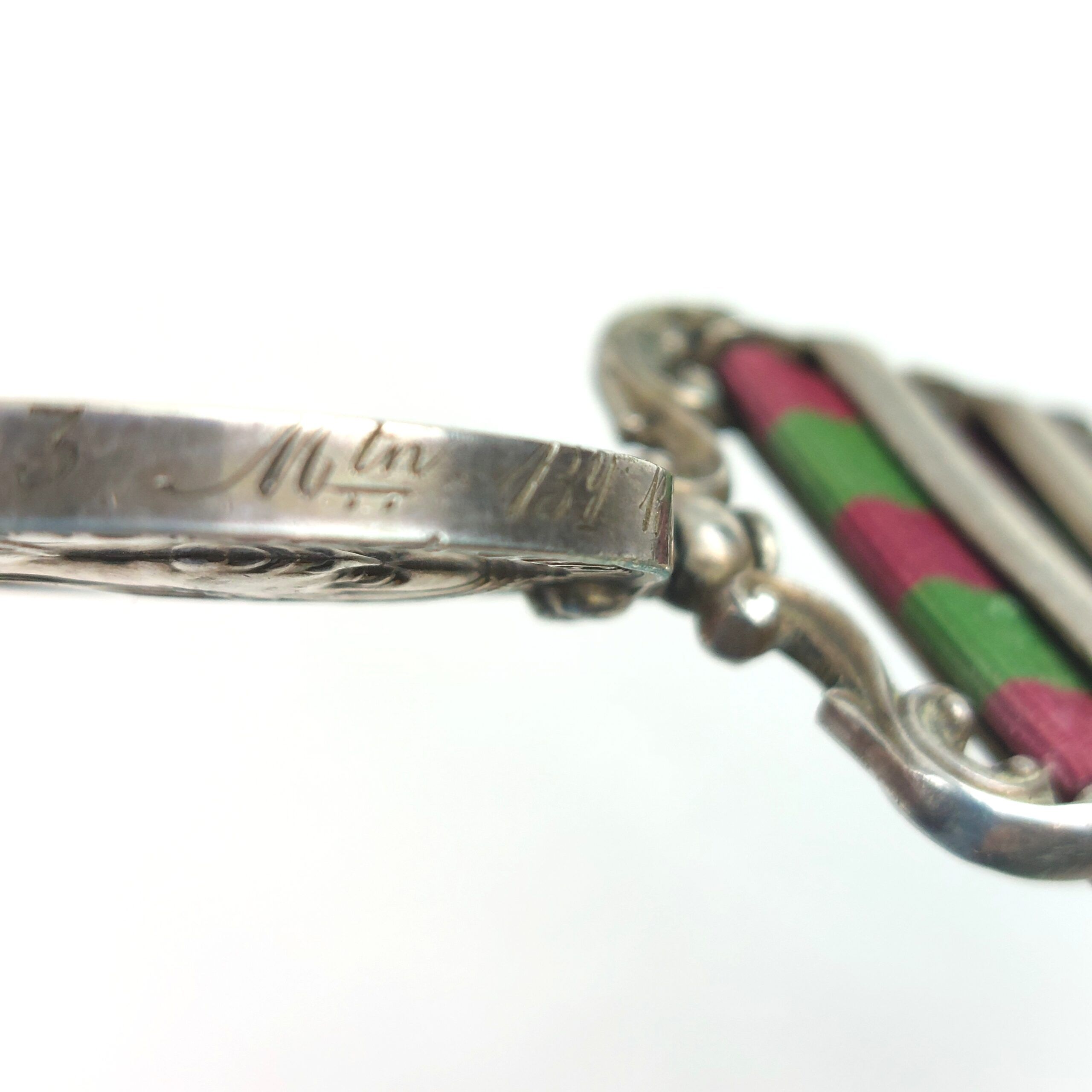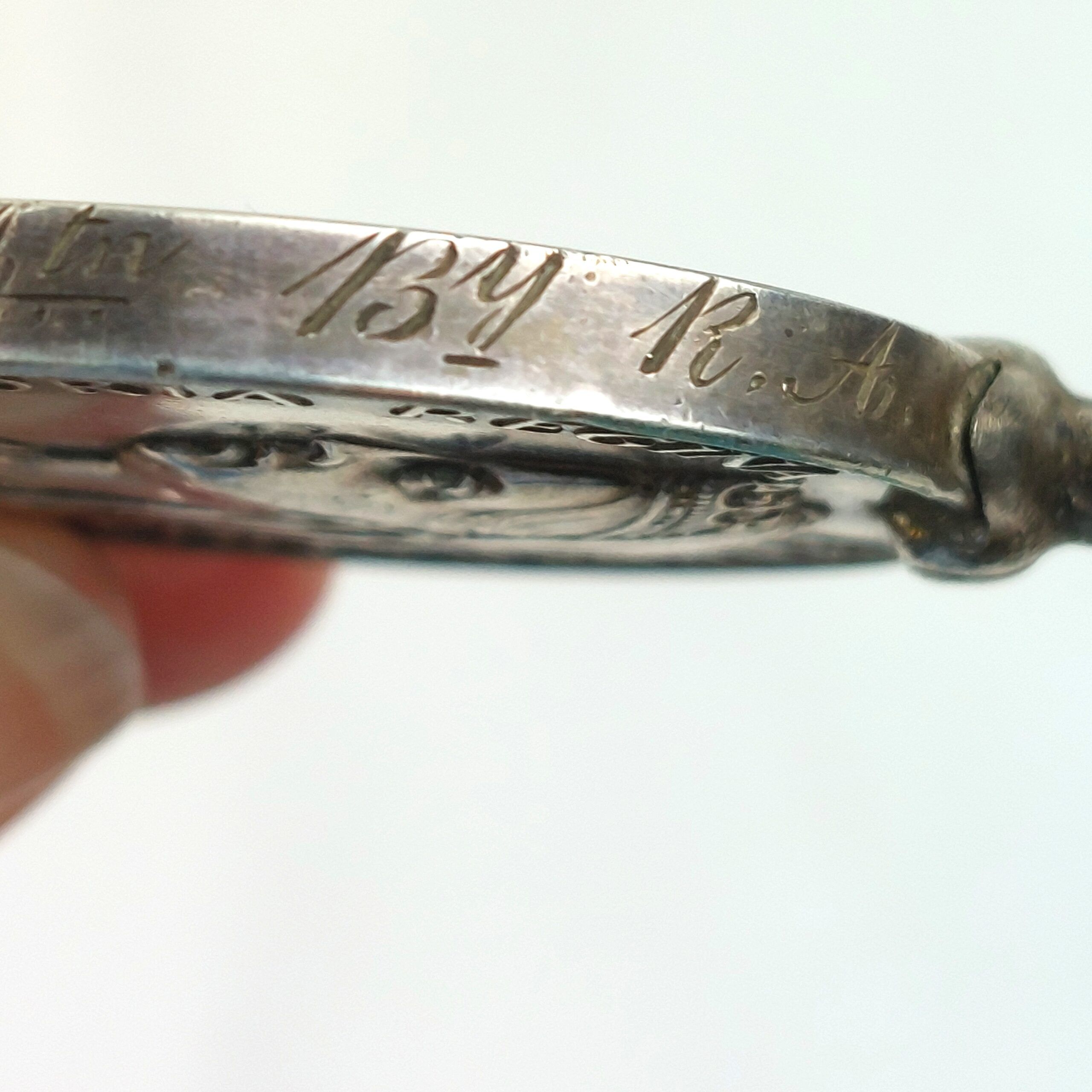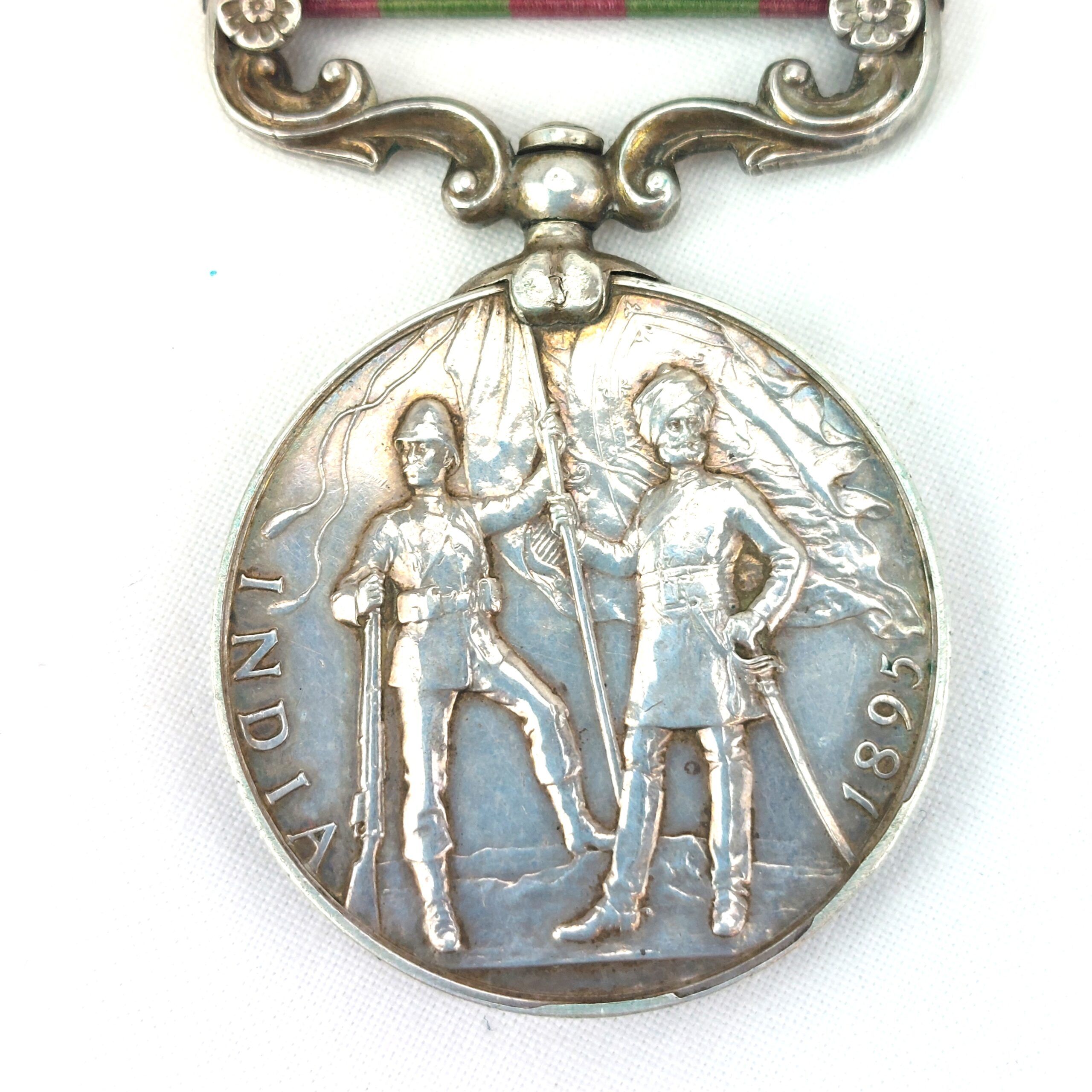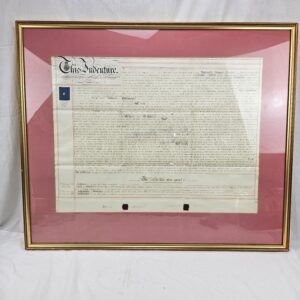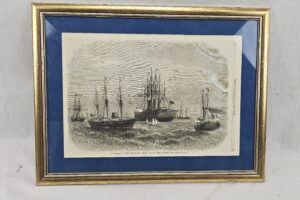*British, 1895, Queen Victoria India Medal, with clasps Relief of Chitral 1895, Punjab Frontier 1897-98, Tirah 1897-98, 97620 Gunner P.A. Killick No. 3 Mtn. BY. R.A. (3rd Mountain Battery)*
The India Medal was a campaign medal approved in 1896 for officers and men of the British and Indian armies. It was awarded for various minor military campaigns in India, primarily on the North-West Frontier from 1895 to 1902, replacing the India General Service Medal (1854).
The medal was issued in silver to soldiers of the British and Indian armies and in bronze to native bearers and servants. The obverse features Queen Victoria’s profile. The reverse, designed by G. W. de Saulles, depicts a British and an Indian soldier together carrying a standard with the inscription “India 1895,” although the Edward VII version omits the date. The 1.25-inch (32 mm) wide ribbon consists of five equal stripes of red, green, red, green, and red.
Clasps:
Relief of Chitral 1895 – 7 March – 15 August 1895
Punjab Frontier 1897–98 – 10 June 1897 – 6 April 1898
Tirah 1897–98 – 2 October 1897 – 6 April 1898
The 3rd Mountain Battery was established in 1759 as “Captain T. Smith’s Company, 3rd Battalion Royal Artillery.” Renamed No. 3 Mountain Battery in 1889, it became the oldest mountain battery in the Royal Artillery, being the first to be equipped as such. From 1759 to 1908, the battery participated in numerous conflicts, including the American War of Independence, Corunna, Crimea, and thirty years (1878-1908) in India and Burma. In India, it mainly served on the NW Frontier, including engagements in Kabul, the relief of Kandahar, Zhob Valley, Burma, Sikkim, Miranzai, Isazai, Chitral, Mohmand, and Tirah.
JAQBOOXCHE_2251165600


